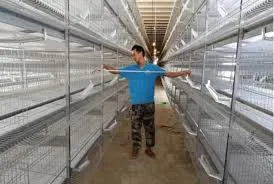High-Quality Pellet Making Machine for Poultry Feed - Efficient & Durable
Sep . 06, 2024 05:54 Back to list
High-Quality Pellet Making Machine for Poultry Feed - Efficient & Durable
Pellet Making Machine for Poultry Feed Revolutionizing Feed Production
In recent years, the poultry industry has seen significant advancements, particularly in the production of high-quality feed. Central to this evolution is the pellet making machine, which plays a crucial role in enhancing the efficiency and nutritional value of poultry feed.
Pellet making machines are designed to transform raw feed materials, such as grains, vitamins, minerals, and other nutritional additives, into uniform pellets. This process not only simplifies feeding but also improves the digestibility of the feed, ensuring that poultry can better absorb the necessary nutrients. The advantages of using pellets over traditional feed forms, such as mash or crumbles, are numerous.
One of the primary benefits of pelletized feed is its enhanced nutritional value. When feed is processed into pellets, it undergoes heat and pressure, which can help eliminate harmful bacteria and pathogens present in raw ingredients. Additionally, the pelletization process can increase the bioavailability of certain nutrients, making it easier for poultry to utilize them. This is particularly important in commercial poultry farming, where the efficiency of feed conversion can significantly impact profitability.
pellet making machine for poultry feed

Moreover, pellet feed reduces waste and feeds wastage. The compact size of pellets means they are less likely to be scattered, reducing loss during feeding. This is vital in large-scale operations, where even small amounts of wasted feed can lead to substantial financial losses. Furthermore, the uniform size of pellets ensures that all birds receive the same diet, promoting even growth and reducing competition among flock members.
The versatility of pellet making machines is another significant advantage. These machines can be adapted to produce pellets of various sizes and formulations, catering to the specific dietary needs of different poultry species, from broilers to layers. This adaptability is essential, especially as the demand for specialized poultry diets increases.
Investing in a pellet making machine may appear costly initially, but the long-term benefits include reduced feeding costs, improved feed conversion rates, and better overall poultry health. Additionally, many modern machines are designed with energy efficiency in mind, further lowering operating costs over time.
In conclusion, the pellet making machine for poultry feed is a game changer in the animal husbandry sector. By ensuring the production of nutritious, easily digestible, and waste-reducing pellets, these machines contribute not only to the health and productivity of poultry but also to the sustainability of the poultry industry. As technology continues to advance, the potential for further improvements in feed production remains promising, making this an exciting time for poultry farmers and industry stakeholders alike.
-
Hot Sale 24 & 18 Door Rabbit Cages - Premium Breeding Solutions
NewsJul.25,2025
-
Automatic Feeding Line System Pan Feeder Nipple Drinker - Anping County Yize Metal Products Co., Ltd.
NewsJul.21,2025
-
Automatic Feeding Line System Pan Feeder Nipple Drinker - Anping County Yize Metal Products Co., Ltd.
NewsJul.21,2025
-
Automatic Feeding Line System - Anping Yize | Precision & Nipple
NewsJul.21,2025
-
Automatic Feeding Line System - Anping Yize | Precision & Nipple
NewsJul.21,2025
-
Automatic Feeding Line System-Anping County Yize Metal Products Co., Ltd.|Efficient Feed Distribution&Customized Animal Farming Solutions
NewsJul.21,2025






